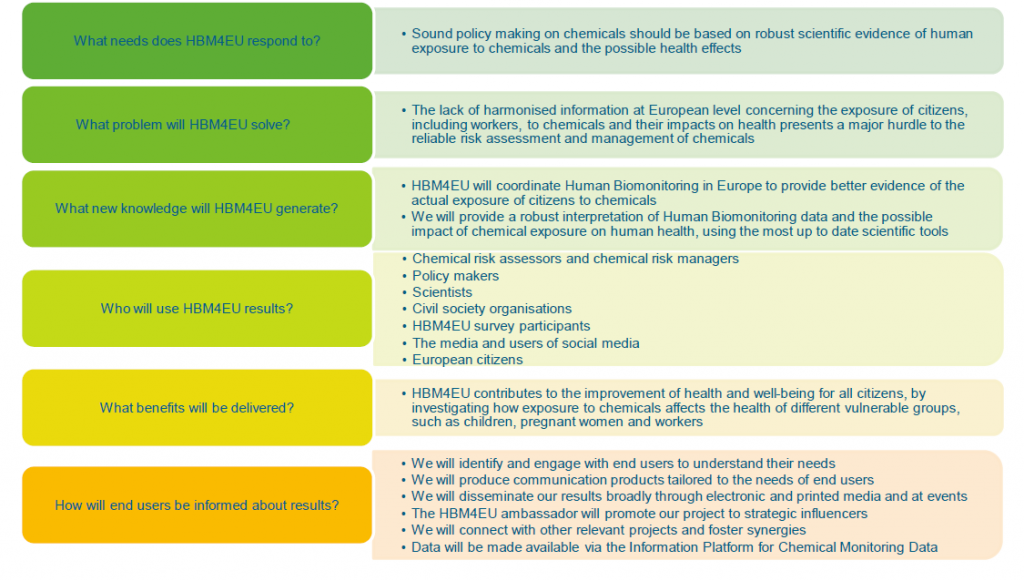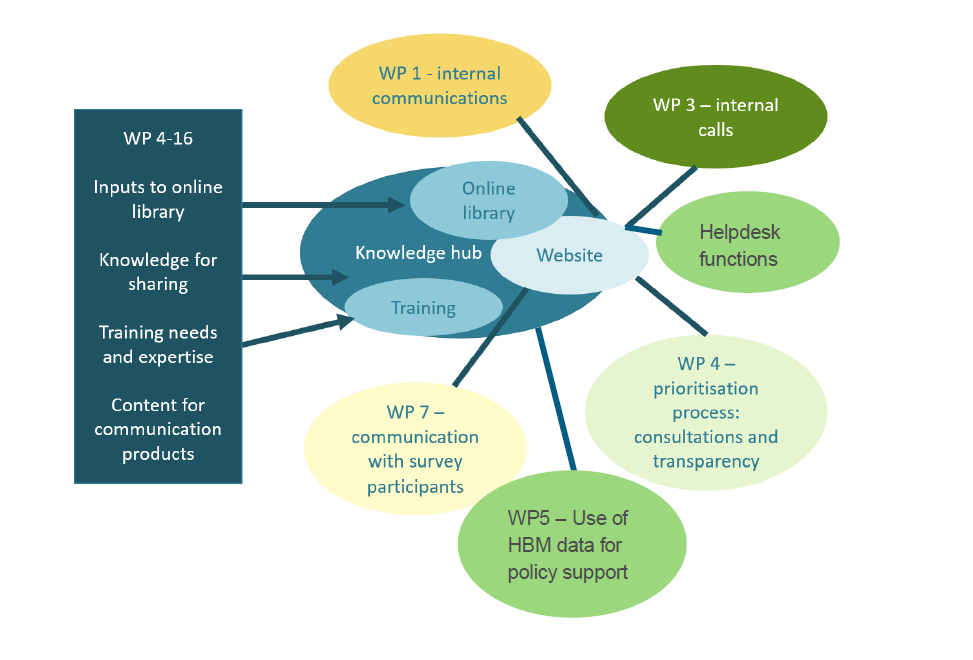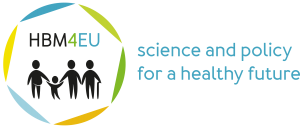HBM4EU is a joint effort of 30 countries, the European Environment Agency and the European Commission, co-funded under Horizon 2020. Running from 2017 to 2021, HBM4EU generates knowledge to inform the safe management of chemicals and so protect human health in Europe.
You can watch the introductory HBM4EU video here or download a short overview of the project, entitled HBM4EU in brief.
HBM4EU is coordinating and advancing human biomonitoring in Europe and so provide better evidence of the actual exposure of citizens to chemicals. In addition, we provide a robust interpretation of human biomonitoring data and the possible impact of chemical exposure on human health, using the most up to date scientific tools.
HBM4EU partners effectively communicates results to policy makers, ensuring their exploitation in the design of new chemicals policies and the evaluation of existing measures.
This initiative contributes directly to the improvement of health and well-being for all citizens, by investigating how exposure to chemicals affects the health of different vulnerable groups, such as children and pregnant women, as well as of highly exposed groups like workers.
Data used and produced under HBM4EU will be made accessible via IPCHEM – the Information Platform for Chemical Monitoring. IPCHEM is the European Commission’s reference access point for searching, accessing and retrieving chemical occurrence data collected and managed in Europe. 
Key project objectives are:
- Harmonizing procedures for human biomonitoring across the 28 participating countries, to provide policymakers with comparable data on human internal exposure to chemicals and mixtures of chemicals at the EU level;
- Linking data on internal exposure to chemicals to aggregate external exposure and identifying exposure pathways and upstream sources;
- Generating scientific evidence on the causal links between human exposure to chemicals and health outcomes;
- Providing the most relevant tools to detect emerging chemicals and to identify the chemical mixtures of highest concern;
- Adapting chemical risk assessment methodologies to use human biomonitoring data and account for the contribution of multiple external exposure pathways to the total chemical body burden;
- Feeding information on exposure pathways into the design of targeted policy measures to reduce exposure.
HBM4EU partners are tracking progress towards meeting key project objectives through the use of a set of indicators of success. Short leaflets on these indicators of success are available for download here.
The activities developed to deliver these objectives are organised into work packages clustered under three pillars, as shown below.
Prioritization and input to the annual work plan
Translation of results into policy
Sustainability and capacity
These work packages are supported by work packages on the overall Programme Management and Coordination, the Knowledge Hub and Internal Calls. These work packages are described below.
Programme Management and Coordination
This work package delivers the overall coordination of the HBM4EU project and is managed by the HBM4EU Secretariat at the German Environment Agency. Responsibilities include the administrative, financial and scientific management of the programme. Additional tasks include ensuring the timely delivery of defined outputs, keeping track of progress and addressing unforeseen challenges. This involves monitoring steps towards achieving objectives and producing deliverables under each task and for all project partners, as well as quality control and submission of final deliverables and milestones. Preparation of progress reports and annual work plans to document and steer the work of the HBM4EU project is an essential dimension of the work.
The HBM4EU Secretariat is supported by the Management Board in supervising progress and taking decisions on the strategic direction of the project. Management Board meetings take place at regular intervals throughout the year.
The composition and selection of members of the Governing Board, the Stakeholder Forum, the Ethics Board and the Advisory Board and the organisation of their regular meetings all fall under the work on Programme Management and Coordination. The planning and organisation of meetings of the HBM4EU consortium are also arranged under this work package.
A legal and ethics policy document is developed, with the aim of ensuring the proper handling of data and developing and implementing data protection measures and measures to prevent the malevolent use of research findings.
Knowledge Hub
The Knowledge Hub is key to bridging science and policy, and is coordinated by the European Environment Agency. Our 2020 Strategy for the communication and dissemination of HBM4EU results identifies our key audiences, and maps the types of products we produce and activities we engage in to spread the results of our work:

The aim is to effectively communicate HBM4EU results to a wide range of potential users in a coherent, targeted and timely manner, making use of the latest technological developments. This includes actively disseminating new knowledge generated under the project through a wide range of channels, both scientific and non-technical. A principle tool is the online library, available via this website.

The HBM4EU partners are engaged in dialogue with the users of our results, including the policy community and stakeholders. We also develop messages aimed at raising awareness amongst the general public, both to enable public participation in the broader debate on chemicals and to inform people about chemical safety. Implementation of the communication strategy for the HBM4EU project will be based on the following principles:
- Broad dissemination of results
- Transparency
- Reliability
- Open engagement with stakeholders
- Targeted communication with different audiences
In short, in order to achieve the main project objectives and ensure that our results are exploited and generate impact, we will actively be engaging with a broad range of end users at national and international levels. These end users can be categorised under the following groups:
- Policymakers
- Chemical risk assessors
- International organisations
- Scientists
- Stakeholders
- The European public
- HBM4EU survey participants
- The media
In addition, several training schools were successfully delivered in 2019, building capacities across the partner countries and supporting implementation of the scientific programme. These training programmes explicitly support the harmonisation of procedures for human biomonitoring across our 30 National Hubs, by building capacities to apply the approaches and methods validated under the HBM4EU.
The current 2020 training programme is available on our training page.
Under HBM4EU, internal calls are foreseen, with the aim of identifying expertise to deliver work on topics selected by the Management Board. The work package on internal calls is managed by INSERM.

Background to HBM4EU
The use of chemicals can provide numerous benefits to society. At the same time, exposure to hazardous chemicals presents a risk to human health.
Individuals are exposed to a complex mixture of chemicals in their daily lives through the environment, products, food and drinking water and at work. For many chemicals, the health impacts over a lifetime associated with exposure remain unknown. In addition, understanding of the health impacts of exposure to mixtures of chemicals is limited.
A major hurdle to the reliable risk assessment and management of chemicals is the lack of harmonised information at the European level concerning the exposure of citizens, including workers, to chemicals and their impacts on health.
Human biomonitoring allows us to measure our exposure to chemicals by measuring either the substances themselves, their metabolites or markers of subsequent health effects in body fluids or tissues. Information on human exposure can then be linked to data on sources and health effects, in order to inform research on exposure-response relationships in humans.
Disclaimer
The HBM4EU project was launched in 2016 with the aim of improving the collective understanding of human exposure to hazardous chemicals and developing HBM as an exposure assessment method. The project had €74m in funding and jointly implemented by 120 partners from 28 participating countries – 24 EU member states plus Norway, Switzerland, Iceland and Israel and the European Environment Agency. One of its aims was to ensure the sustainability of HBM in the EU beyond 2021. The project ended in June 2022. The website will not be updated any longer, except the page on peer reviewed publications, but will be online until 2032.


